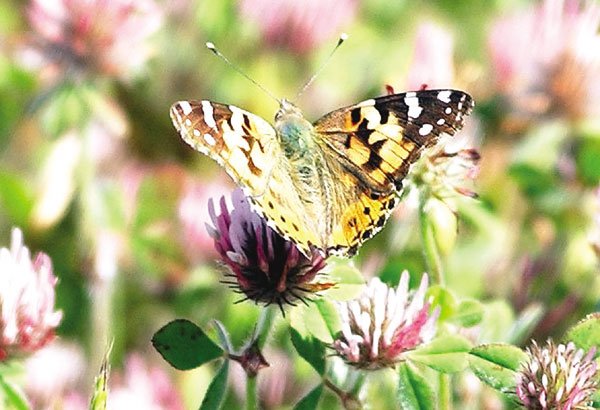Gilroy
– If you’ve been amazed at the number of butterflies swarming
around town this week, you’re not alone.
In the last several days thousands of butterflies have emerged
from their pupas and taken over the town, turning Gilroy into the
set of a silly horror movie about killer bugs and forcing motorists
to use a lot of wiper fluid to keep their windshields clean.
Gilroy – If you’ve been amazed at the number of butterflies swarming around town this week, you’re not alone.
In the last several days thousands of butterflies have emerged from their pupas and taken over the town, turning Gilroy into the set of a silly horror movie about killer bugs and forcing motorists to use a lot of wiper fluid to keep their windshields clean.
Stan Maggi, an agricultural biologist with the Santa Clara County Department of Agriculture said Tuesday the unusually large population is due to Gilroy’s unusually wet winter.
“The wet weather produced a lot vegetation and weeds that the larvae feed on,” Maggi said. “More caterpillars survive and the warm weather burst will make them go through their life cycles faster.”
Butterflies lead short lives, usually measured in weeks. Because their lives are short, butterflies devote their time to reproducing, with males patrolling for mates in the afternoon. Females lay their eggs one at a time.
Many of Gilroy’s butterflies are painted ladies. The painted lady prefers nectar from plants three to six feet high, especially thistles. They also enjoy aster, cosmos, blazing star, ironweed and joe-pye weed.
From the deserts of northern Mexico, the painted lady migrates and temporarily colonizes the United States and Canada south of the Arctic. Sometimes, population explosions in Mexico will cause massive northward migrations.
The painted lady is known as the thistle butterfly because the caterpillars like to feed on them and also as the cosmopolitan because it is the most widely distributed butterfly in the world.















